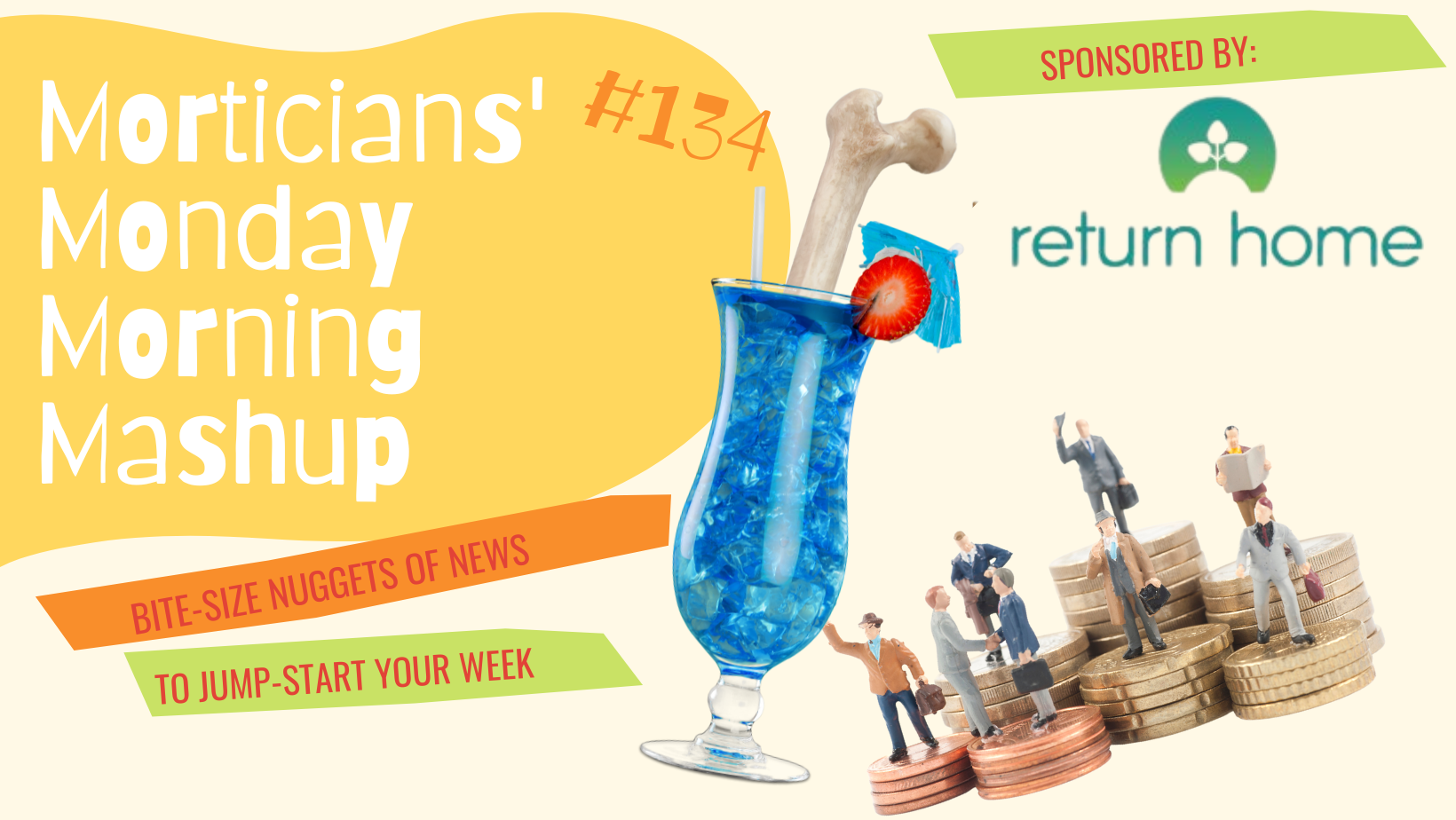Funeral Business Feeling Six Feet Under. Bailout?
 The following article has made quite a stir in the funeral industry. It seems as thought the reporter has not told the whole truth. Next, I will be posting a follow up article provided by the NFDA in a direct rebutle to this article.
The following article has made quite a stir in the funeral industry. It seems as thought the reporter has not told the whole truth. Next, I will be posting a follow up article provided by the NFDA in a direct rebutle to this article.
In case you’ve been dying for more bad news about the economy, here’s a grave new indicator: Even the death industry is in a hole. It has long been suspected that the funeral business is immune from economic cycles, that the Grim Reaper tends not to follow the stock market. But this time, funeral homes are discovering that their clients’ thrift — sheet-metal urns instead of bronze caskets, cheese-and-cracker nibbles instead of traditional funeral luncheons — is positively killing profits.
So funeral directors did what everybody else does: They asked for a federal bailout. “We recognized that there may be a situation where a lot of folks who were displaced or unemployed might need some help in paying for their funerals,” John Fitch Jr., lobbyist for the National Funeral Directors Association, explained yesterday at the group’s annual gathering, at the Mayflower Hotel. “We had some preliminary discussions about providing some stimulus payments to the states” for funerals, he added.
It was quite an undertaking, and it didn’t work; apparently, funding funerals wasn’t regarded as a spur to economic growth, because much of the benefit gets deep-sixed. Thwarted, the funeral directors tried again at yesterday’s “advocacy summit” to bring attention to their plight, holding a news conference that promised to resolve, once and for all, the question: “Is Funeral Service Recession-Proof?”
“The thing about death and taxes being a certainty — it’s not true, obviously,” argued Chris Raymond, an official with the association.
Raymond had in mind Benjamin Franklin’s adage that “in this world nothing is certain but death and taxes.” The recession, however, has upended both pieces of Franklin’s formula. First, we got a Treasury secretary who didn’t pay all his taxes because, he says, he got things muddled while using TurboTax. And now the funeral business is buried.
It’s not that people have stopped dying. Though there’s some evidence that the death rate drops during a recession (people drive less, for example, so they have fewer accidents), any such effect will soon be swamped as baby boomers prepare to shuffle off this mortal coil. When it comes to the death rate, “the statistics on this are fairly certain,” funeral director Patrick Lynch explained at yesterday’s news conference. “It’s 100 percent.”
That’s a little joke in a business that otherwise is deadly serious. The ironic theme for the group’s 2008 convention in Orlando, “Ticket to Paradise,” was evidently unintentional. And a flip question about the guy selling custom-made suits at the registration table yesterday — are those for the funeral directors or the stiffs? — drew a rebuke from Raymond. “We don’t like that word,” he said.
The Mayflower meeting provided practical advice for moribund funeral homes. The opening session included a pitch from American Airlines Cargo and a recommendation that funeral directors “use a known shipper” (relatives don’t like it when Grandpa’s remains get lost). After that session, a trio of funeral directors, all in dark suits, lined up at a table, draped in black fabric, for the news conference. They looked much like the banking and automotive executives who came to town to ask for government help, except they attracted rather less interest: a grand total of two reporters.
The undertakers traded tales of penny-pinching mourners. Lynch, of Michigan, spoke about the “huge bowl of Bazooka bubble gum” displayed at one visitation. “Didn’t cost a lot of money,” he said. “That’s what we see people doing.”
“Instead of feeding everybody dinner or lunch, we’ve been throwing little, for lack of a better word, cocktail-party type things, cheese and crackers,” added James Olson of Wisconsin. “Also,” he said, “my cremation rate has gone up in the last two years. . . . I’m at 42 percent.”
Lynch turned to the “merchandise” of the funeral. “People, rather than selecting a copper or a bronze casket, may choose a 20-gauge steel casket painted in a copper color,” he said. “Instead of choosing a mahogany casket made of real mahogany, they may choose a poplar casket stained with a mahogany stain, which to most observers looks the same. Perhaps they would chose a crepe interior as opposed to a velvet interior in a casket. Perhaps they would choose a sheet-metal urn as opposed to a solid-bronze urn.”
“We do centralized preparation,” contributed John Reed from West Virginia.
This started a diversion into the macabre mechanics of burial. “We’ve cut back on our water consumption, put on a water regulator so we’re not freely flowing water during our preparations,” submitted Olson.
And it’s not just the corpses that have to make do with less. “Instead of having a Christmas party for all of our staff where we spend money, we actually have a charity bowling tournament,” volunteered Lynch.
The list of woes was long: fewer “pre-need” sales; more, uh, deadbeats who don’t pay their loved ones’ funeral bills; shorter burial rites; and hearses that cost up to $80,000 and are murder on fuel economy.
No wonder the business looks like death these days. Olson confessed that he booked his trip to Washington on Travelocity and was not staying at the Mayflower. At his funeral home, he added, “I’m cutting the grass this year.”
On the other hand, cutting grass beats pushing up daisies.
Article By Dana Milbank, Washington Post



